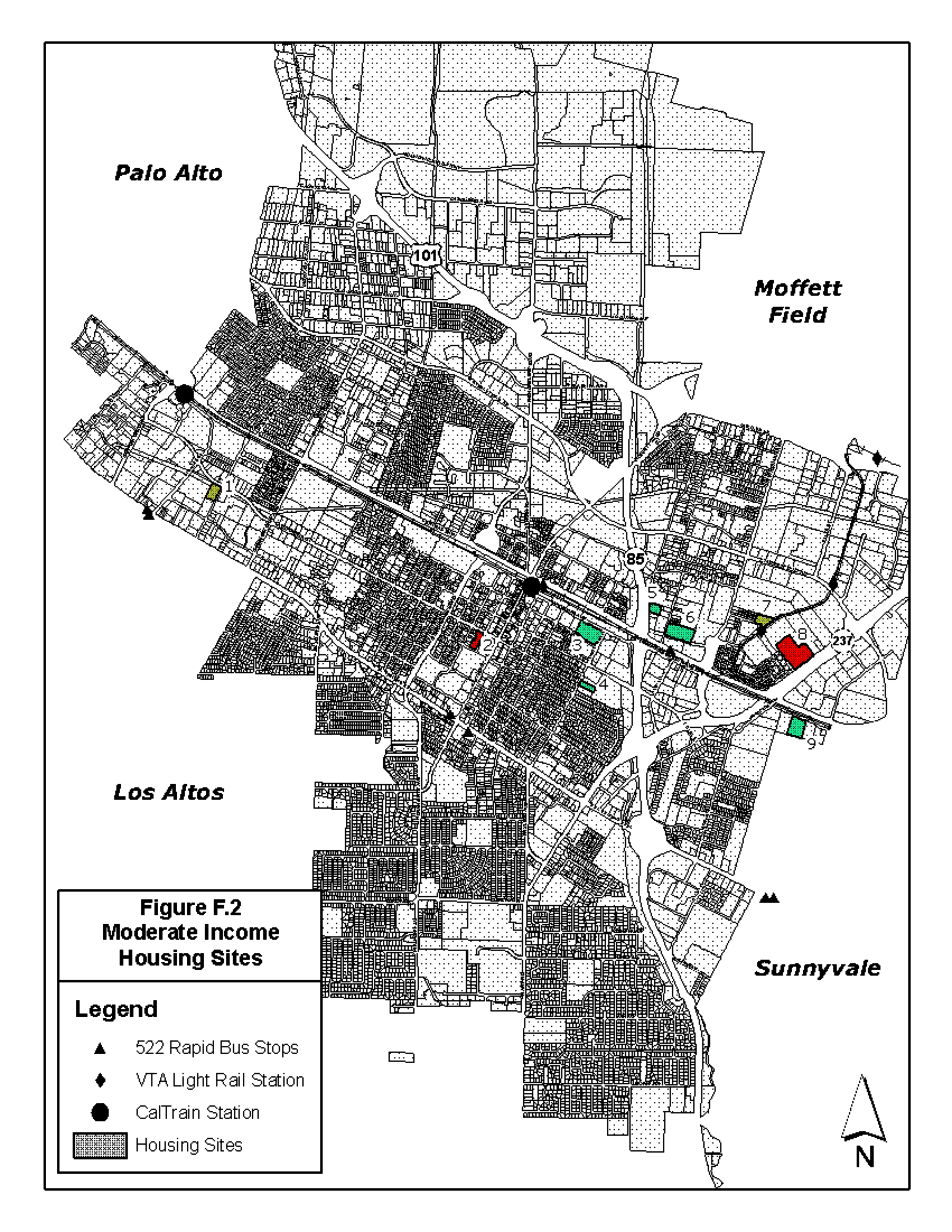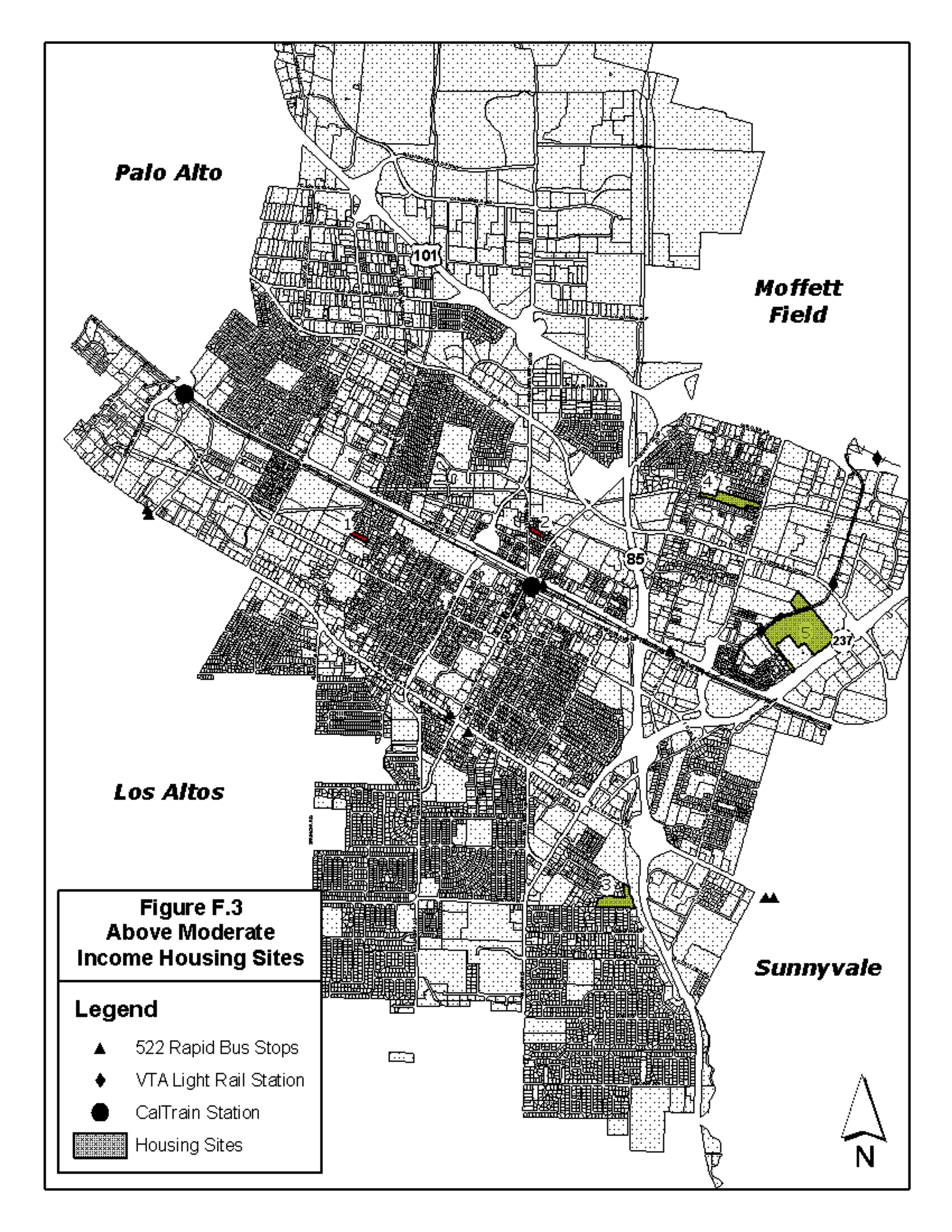Predicting Housing - Mountain View's 2007 Housing Element
Background
Housing Element
In 2010 city presented their “housing element”. This document contains the city’s 8-year housing plan. The housing element covered the years 2007-2014. To prepare the housing element the city contracted the firm BAE.
RHNA
The state of California creates a needs assessment for each city and county. The state had assigned Mountain View the task of ensuring at least 2,599 homes would be built from 2007-2014. When the housing element came before council 892 homes had already been approved. So the city only needed to plan to get 1,231 more units built.
The housing is additionally divided into income buckets, with very low, low, moderate, and above moderate income divisions.
Predicting Growth
In table 3.9 there are population and employment predictions.
The housing element predicted the population in Mountain View would grow from 73,900 in 2010 to 81,000 in 2020. A growth of 7,100. The 2020 census put our population at 82,376. The prediction was off by 1,376. I call that pretty close.
The housing element predicted the number of jobs in Mountain View would grow from 52,610 in 2010 to 60,690 in 2020. A growth of 8,080. LODES data from 2020 shows 94,529 people worked within the borders of Mountain View. A growth of 41,919. Five times what was predicted.
This is one reason why the jobs-housing imbalance - already a problem in 2010 - has gotten so much worse
Predicting Capacity
Site Inventory
To show that the housing would be built, BAE and city staff identified 32 sites where housing could be built, and estimated a “realistic capacity” for each site. The total “realistic capacity” for all sites was 2,154 homes. This capacity was much more than the remaining state-assigned total of 1,231 homes. So staff concluded that Mountain View could meet it’s obligations, and no rezoning would be necessary.
What Was Built
Today, in 2024, 12 of the 30 sites staff identified have no housing built.1 Of those with housing, only 10 of the projects were approved before the end of 2014. And only 8 of those 10 were approved under the existing zoning. Those 8 projects, approved under the existing zoning and before the end of 2014, created 567 new homes. About a quarter of the predicted total.2
Below is the site inventory maps from the housing element. Sites which had a housing project approved before the end of 2014 are in green. Sites which have had housing built on them since that time are in yellow. Sites which still have no housing are in red.



The total of all housing projects that have been approved on those sites, as of May 2024, is 1,412 homes. About 2/3 of the predicted realistic capacity.
How Good Were the Predictions
For the most part the predicted capacity was correct. Some had fewer homes, some had more. The total predicted capacity for all sites on which new housing has been built was 1,508 homes. 1,412 homes were built. That is a pretty good prediction of capacity.
The real shortfall is mostly due to the timelines. Many factors need to align in order for new housing to be built, and even a site in a prime location may not see development for decades.3 Even with the enormous housing pressure in the bay area, it seems we should have a site inventory at least 3x our target.
One solution would be “broad upzoning”
Footnotes
-
At least 3 of the sites currently have some kind of housing plan “in the pipeline”. But I don’t think any have started construction yet. ↩
-
We are only counting net housing here. Since most sites had very little housing before this does not make much difference to the total. One exception is 277 Fairchild. The site had “1-story 25-room motel, a small convenience store, and two 1-story single-family homes”. According to the staff report “some of the motel rooms are occupied by long-term residents”. We do not know how many. But as only 26 new units were built, it is possible this project did not result in any meaningful new housing. All of the new units are market-rate. ↩
-
Some sites from the 2007 housing element are again in the city’s 2023 housing element These include 918 Rich Ave, 615-749 El Camino Real, and 1720 Villa St. This time though there are already approved projects at these sites, and Villa St. is already built. ↩